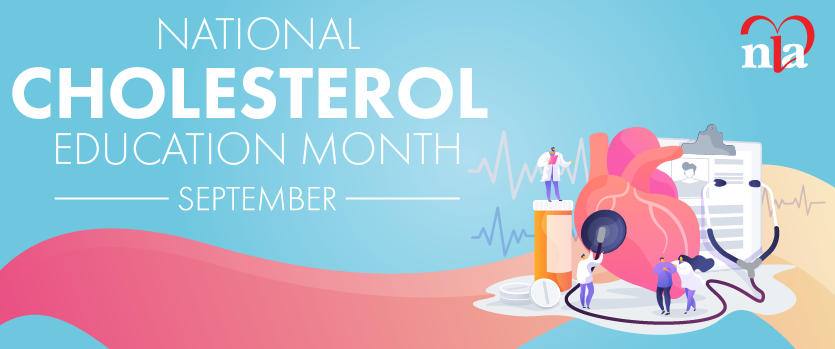Case:
The patient is a 53-year-old Caucasian male who comes to the cardiovascular prevention clinic with a request: “I am five years from the age at which my father died from a heart attack and I want to know what my risk is for a similar heart attack. I am not ready yet to take a statin, because it increases the risk for diabetes.”
The patient has no complaints and no traditional coronary artery disease (CAD) risk factors, such as diabetes, hypertension, or dyslipidemia. He has never smoked and exercises regularly about five times a week. His dietary habits are generally healthy, consisting of a Mediterranean eating style. He has a family history of CAD, with his father dying of a heart attack at age 58. He takes only a vitamin supplement. The physical exam reveals: Body Mass Index (BMI) is 25.3 kg/ m2, blood pressure is 124/84 mmHg, and heart rate 80 beats/min. Physical exam is otherwise unremarkable. Results of a fasting lipid panel are: total cholesterol 177 mg/dl, low-density lipoprotein (LDL)- cholesterol 111 mg/dl, triglycerides 100 mg/dl, and high-density lipoprotein (HDL)- cholesterol 46 mg/dl. His fasting blood sugar is 76 mg/dl. Renal function and urine analysis are within normal limits.
To summarize the above scenario, we have a middle-age man in excellent health, who exercises regularly without any complaints. He worries about his family history of CAD and wants to know what can be done to minimize his risk of having a heart attack. We calculated his cardiovascular risk using, respectively, the Framingham risk calculator (http://cvdrisk.nhlbi.nih. gov/) and the American Heart Association/American College of Cardiology (AHA/ ACC) risk calculator (http://tools.acc. org/ASCVD-Risk-estimator/). Based on the Framingham coronary heart disease risk (CHD) calculation, the 10-year risk for CHD is 5 percent, while the AHA/ACC risk calculator gives a risk score of 4.1 percent for the next 10 years and a lifetime risk of 36 percent.
Despite the low risk, the patient is still fearful and asks, “Why should my risk for myocardial infarction be different from my father’s within five years? Because of this concern and because of the family history of CAD, we performed atherosclerosis imaging using Computed Tomography (CT) for coronary artery calcium score (CACS).
His total coronary artery calcium (CAC) Agatston score is 478 with the following coronary artery distribution: left anterior descending, 392; circumflex, 34; and right coronary artery, 71. This calcium score places the patient in the 94th percentile for his age/gender. In fact, this score suggests significant atherosclerosis burden and a high enough risk (CAC>300) for symptomatic CHD that functional cardiac stress testing is warranted.
This case illustrates the difference between the biostatistical risk approach versus the personalized or individualized early cardiovascular disease approach. Adding CAC to traditional risk assessment in people without an indication for statin therapy improves CV risk discrimination.1,2
It has been shown that reclassification to the high-risk category and overall event rates seem too low to justify liberal CAC testing in all of these individuals.3 In this particular case, the patient wants more evidence beyond his calculated-risk scores.
In light of the risk scores and in consideration of the patient’s healthy lifestyle regarding diet and exercise, the advice would be “continue your healthy lifestyle.” The high CAC score provides the evidence of the severity of and the high risk for CHD at short-term and long-term.3,4 Moreover the CAC score is helpful for another CHD preventive therapy — aspirin in subjects with low calculated risk.5 It is clear that the lifestyle of this patient is good regarding diet and exercise, and we reinforced the statement of the patient that he should continue in the same manner as he is. It is evident that the patient needs to be on statin therapy to reduce his atherogenic cholesterol, stabilize plaques, and reduce the likelihood of an acute coronary syndrome.6,7 The patient is very reluctant to take a statin because he has the idea that he would develop muscle pain and he is even more concerned that he would get diabetes because of the chronic statin use.
Our therapeutic recommendations are always based on a patient-centered approach. Before initiation of lipid- lowering drug therapy, the clinician should have a discussion with the patient about treatment objectives, the potential for adverse effects, possible interactions with other drugs or dietary supplements, lifestyle, and medication adherence, and patient preferences. This is very important because a large percentage of patients — more than 50 percent in some studies — prescribed a lipid-lowering drug are no longer taking the prescription within one year.8
Treatment goals and periodic monitoring of atherogenic cholesterol are useful for allowing a clinician to match the aggressiveness of lipid-lowering therapy to a patient’s absolute risk for an atherosclerotic event and for assessing the adequacy of a patient’s response and adherence to therapy. Moreover, these steps are particularly valuable tools in patient-clinician communication. We negotiated a starting dose of atorvastatin 20 mg daily. We had recommended 40 mg, but the patient was reluctant to use high intensity therapy.
We will recheck a fasting lipid profile within three months and will try to target and LDL-cholesterol < 70 mg/dl, we will increase the atorvastatin dose to 40 mg/day. The patient agrees and feels very comfortable with this regimen.
The patient is wondering if he needs a follow-up CAC score within five years. We explained to him that this is not necessary because there is data that statin therapy can result in lower or higher CAC score.9,10
The CAC score is most useful as initial guidance beyond the classical CVD risk score. We now consider the CAC score not only as a risk score but as an expression of early coronary artery disease.
In conclusion, this case highlights the limitations of risk calculators driven mainly by age in those without traditional risk factors. Further risk stratification — with atherosclerosis imaging, CAC, for example — rather than a “one size fits all” approach can greatly help facilitate a meaningful risk/benefit discussion regarding drug therapy. Moreover, a tailored approach regarding statin therapy dosage and monitoring the changes in atherogenic cholesterol creates a better patient-physician interaction, leading to a better therapeutic compliance.
Disclosure statement: Dr. Nijjar has no disclosures to report. Dr. Duprez has received grants from NIH, Pfizer, Sanofi-Aventis, and Regeneron.
References are listed on page 38 of the PDF.





.jpg)
.png)












